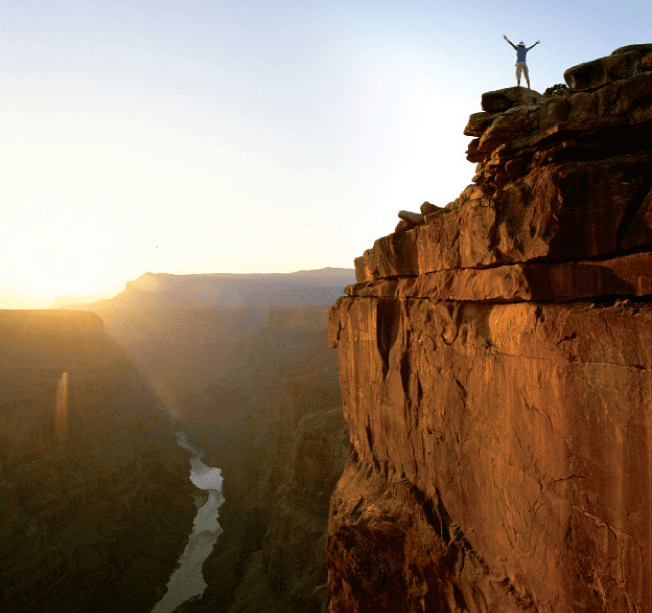
How to Conquer the
Grand Canyon
 |
By Margaret Loftus
As the crow flies, the Grand Canyon's average width is only 10 miles, but driving to the opposite rim takes a whopping five-and-a-half hours – a fact that surprises many first-time visitors who come to "do" the entire canyon in one shot. Indeed, each rim – South, North, and West – offers a vastly different experience, worthy of its own foray.
The Popular South Most of the nearly 5 million people who descend on the Grand Canyon every year flock to the South Rim. Easily accessible and home to the canyon's largest concentration of amenities, the gateway teems with visitors in the summer vying for glimpses of the gorge from the rim's sweet spots, such as Yavapai Observation Station and Desert View.
The crowds ease up in spring and fall – and so do the hot temps on the floor of the canyon. Venture below the rim via the popular Bright Angel and South Kaibab Trails by mule (book several months in advance) or on foot. Not a big advance planner? Check with outfitters for availability on scheduled departures, which range from the Grand Canyon Field Institute's bare-bones educational hikes where you pack your essentials to Arizona Outback Adventures' mule-supported trips with airport transfer and three meals a day.
The Peaceful North The higher North Rim receives more snowfall than its southern counterpart, closing the road to visitors from the first heavy snowfall to mid-May. Concessions are limited, with one lodge and a single developed campground. Visitors are lured by the solitude of "the other side," said to be reminiscent of the park's early days. The North maintains three lookout points that offer a sense of the sheer expanse of the canyon, such as the panoramic view at Cape Royal, where a sliver of the Colorado River can be glimpsed through a natural arch known as Angel's Window. The North Kaibab – the sole developed trail into the canyon from the North Rim _leads hikers and mules, which can typically be reserved the same day, into the canyon to Roaring Springs.
West to the Skywalk Owned by the Hualapai and Havasupai Native American tribes, who have lived here for at least 800 years, the West Rim isn't actually in the national park, making a visit here more of a commercial experience. You'll find an Indian village, Western town, amphitheater, and perhaps most striking: the skywalk, a horseshoe-shaped, glass-bottom walkway that protrudes 66 feet from the canyon's edge. Outfitters offer activities below the rim not allowed in the park, such as helicopter fly-ins and pontoon boat rides on the Colorado River.
Where to Stay In-park accommodations vary from historic lodges, cabins and campgrounds. Book up to a year in advance, especially for the popular El Tovar and Phantom Ranch, on the floor of the canyon. Check the national park's Web site (www.nps.gov/grca) for links.
Getting there Flagstaff is a convenient drive from the North or South Rim. Phoenix and Las Vegas are launching points for many outfitted trips. Near the South Rim, there's a small airport, as well as rail service (www.thetrain.com). Free shuttles operate in and around the South Rim.